One Week In Tokyo: A Foodie’s Guide To Eating In Japan
Mục Lục
One Week In Tokyo: A Foodie’s Guide To Eating In Japan
What’s your ULTIMATE foodie destination? For me, it’s Japan. I can’t wait to share everything I ate, saw and did during my one week in Tokyo!
Japanese food is my favorite. So when I planned a Japan trip last year, I wanted to focus on the food. Throughout the year I spent time studying the different food options in Tokyo and different styles of cooking online. When I arrived in Tokyo I knew exactly what to expect which made my experience so much better. I hope you’ll feel more inspired to visit Japan or more secure about what to expect after reading this post.
The Brief Backstory Of My Trip To Japan
Originally, I chose to travel to Japan by myself for an epic snowboarding trip. But you can’t just go to Japan for a week from NYC, so I tacked on four days in Tokyo on both ends of the snowboarding tour just to accommodate the shipping of my snowboard. Initially, I had no idea what I would do with those extra days in Tokyo, but I had months to figure it out (more on that later!).
The snow in Japan is usually incredible. My ski club organized a trip to Hokkaido a few years ago, but I couldn’t afford the trip. I was devastated. So I promised myself that I would get there eventually. Over the years I stashed $6,000 for this trip and meal prepping was a big part of that!
Unfortunately, the snow conditions didn’t cooperate this year. The good news? I got to spend more time eating. And I can’t wait to share everything I learned about Japanese food with you in this post!
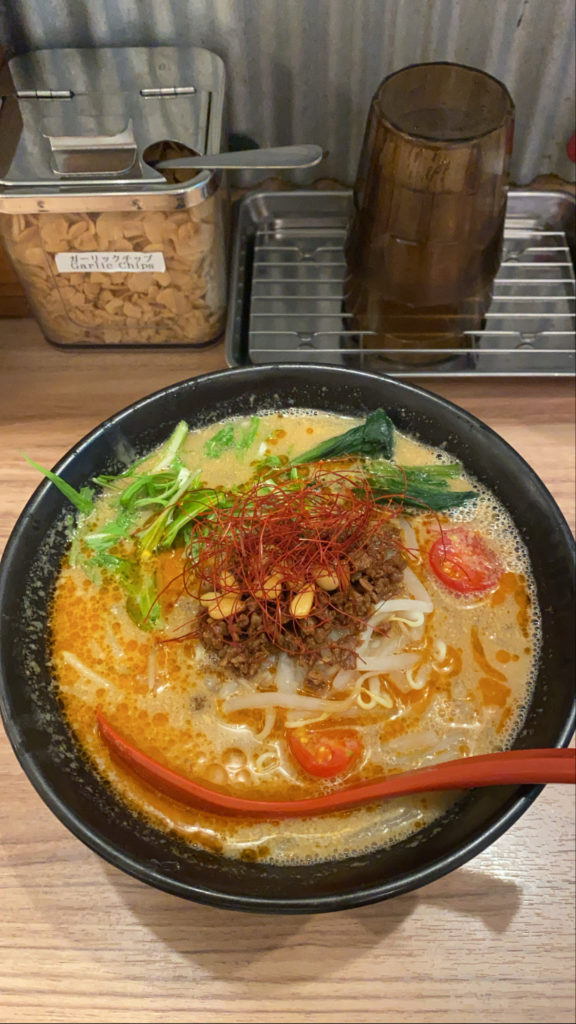
One Week In Tokyo Itinerary For A Solo Traveler
Here’s a general overview of my itinerary! Feel free to click on anything to jump right to the details in this post. Note that in the middle of my time in Tokyo, I went to Morioka for a snowboarding trip which I won’t talk about in this post.
Red = it was on my food bucket list!
Day 0
- Arrived in Narita in the afternoon, took the limousine bus to Shinjuku
- Checked into my hotel
-
7/11 for dinner – onigiri
Day 1
Day 2
Day 3
Day 4*
Day 5
Day 6
Day 7
Day 8
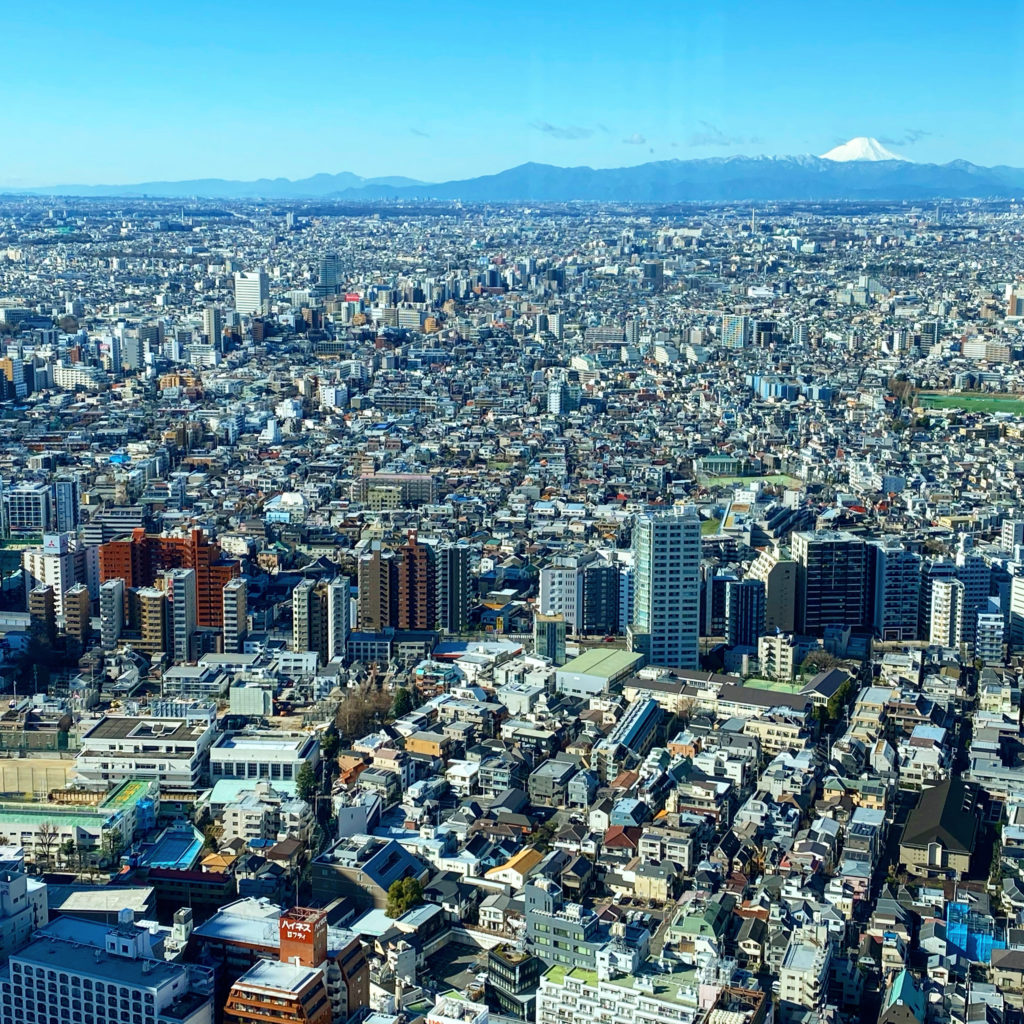
10 General Tips About Eating And Getting Around In Tokyo
I learned a lot prior to coming to Japan to make my trip easier. Here are some of the tips and tricks I found most helpful in restaurants and in general while visiting Tokyo as a tourist who doesn’t speak Japanese.
1. A Suica pass is essential.
It’s your key to convenience – literally! You can load money on it via the mobile app (it syncs up with Apple wallet), shop at convenient stores wit hit and it gets you on all the metro lines you’ll need to scoot around Tokyo.
2. English menus are somewhat common.
You’ll be okay for the most part! Generally, restaurants have pictures on the menus so you can at least point to what you want. You can also ask for a recommendation!
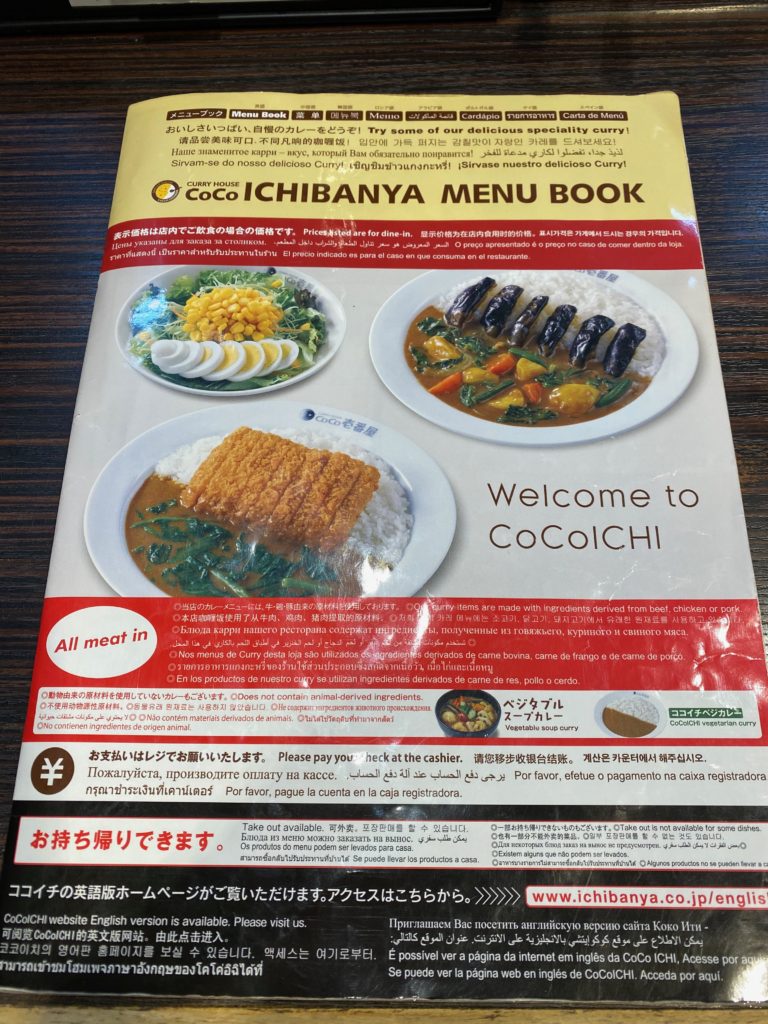
3. A few apps can get you far in Tokyo
Both Google Maps and Apple Maps both worked great while in Tokyo. I downloaded but never used Hyperdia. Google Translate is good for communicating with people when you need to, but useless (but good for a laugh) when it comes to trying to translate menus. And a Yen to USD converter app was extremely useful! There are a bunch of free ones on the app store.
4. Renting Wifi at the airport was the best thing I did on this trip!
It was a last-minute decision (you can do it at the airport) and it was worth the ~$100. Free (and secure) wifi isn’t always easy to find in Japan. Being a solo traveler, I was happy to always be connected no matter what.
5. Get a hotel with coin-operated laundry!
That way you can pack light and save lots of room for souvenirs.
6. If there’s a line for a restaurant or food stand and you have time, get in it.
Chances are it’s amazing (it worked out every time for me!)
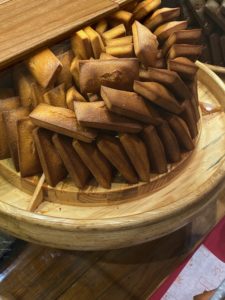
7. Yelp won’t help you in Tokyo
Instead, they use Tabelog and Google reviews. If you see a 3 star rating online for a restaurant, it actually means that place is pretty good! I read over and over again that Japanese people rate restaurants a little differently.
8. Gift giving is a thing in Japan
If you stay with an Airbnb host or take cooking classes/do food tours, I highly recommend bringing something small (even if it’s just a snack from your home country) to give to your guide or host – since they’ll probably give you one too. I got small gifts from many people I met during my trip! It was very touching.
9. When in doubt, watch the locals.
I found myself in many situations where I didn’t know how to eat something or didn’t know what to do. Taking a minute to watch others do it first helped me feel more confident!
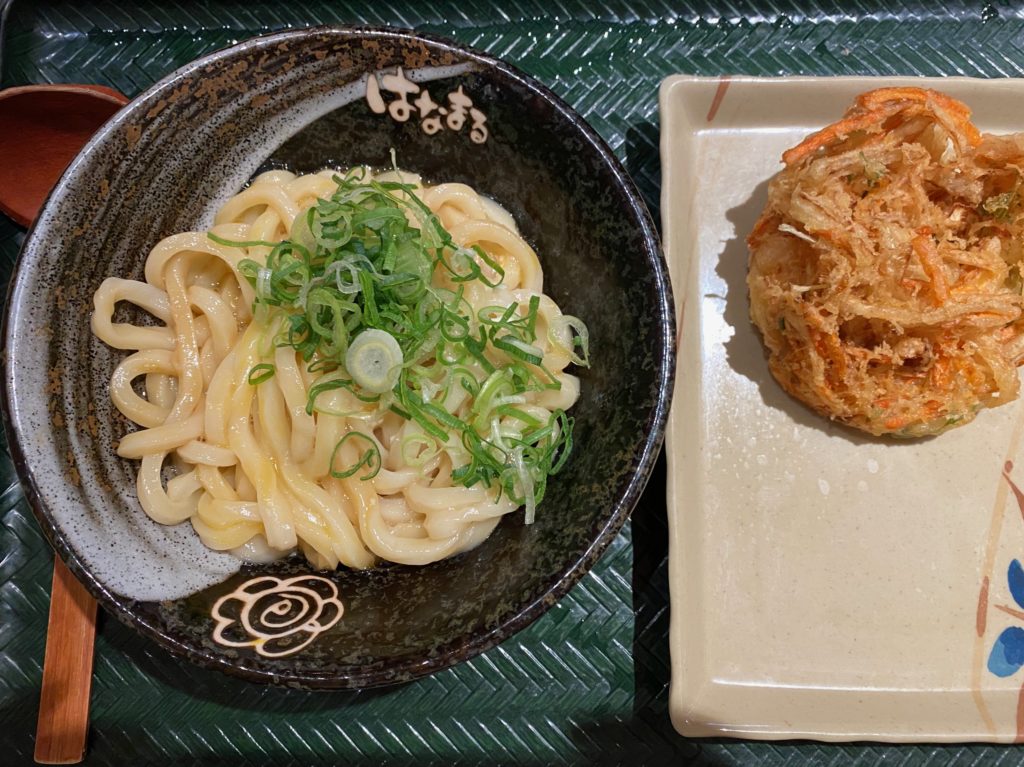
10. If you have food allergies, Japan can be a tough place to find good food.
Soy, gluten, dairy, eggs, fish and meat are pretty common in Japanese dishes and they aren’t very allergen-friendly yet. So it’s advised that you print out a card that dictates your allergies in Japanese to show to restaurant staff before you order food!
Also, learn about Japanese food etiquette before you go! Learning how to use chopsticks is a good idea too.
12 Things NOT to do in Japan
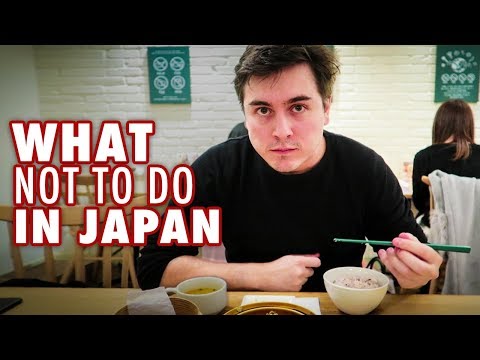
Watch this video on YouTube
My Japanese Food Bucket List
As I mentioned, I did a lot of research before going to Japan. Below, I’ll share some of the resources I used! But along the way, I came up with having a food bucket list. The bucket list made its way into my notebook, where I could check things off and journal about my experiences. The list grew during my trip, and I was able to check all but one thing:
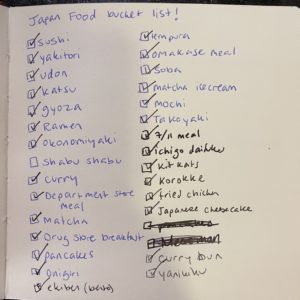
On the list: sushi, yakitori, udon, katsu, gyoza, ramen, okonomiyaki, shabu shabu, curry, department store meal, matcha, convenient store/drug store breakfast pancakes, onigiri, ekiben (bento), tempura, omakase meal, soba, matcha ice cream, mochi, takoyaki, 7/11 meal (and snacks), ichigo daifuku, kit kats, korokke, fried chicken, Japanese cheesecake, curry bun and yakiniku.
When you travel, making a bucket list like this is so fun! It really helped make the food experiences more memorable.
The Top 10 Food Experiences I Had In Tokyo
10. Onigiri (rice balls) & Convenient Store Food In General
This was the first thing I ate when I arrived in Japan – from a 7/11 next to my hotel. It comes wrapped up in plastic (like most things in Japan) and you have to open it a certain way to make sure the nori (seaweed) wrapped around the rice ball stays intact. Don’t worry if that’s news to you – I had no idea and opened it completely wrong. It felt weird to bite into a ball of rice at first, but it was so comforting! These were my go-to breakfast throughout my trip.

9. Hotcakes (pancakes)
I was told many times that the pancakes (called hotcakes) in Japan are next level and it’s true – they’re amazing. I enjoyed this stack of strawberry pancakes at Rainbow Pancake in Harajuku, one of the coolest places to people-watch in Tokyo if you like crazy fashion. These pancakes are different from what we normally find in a diner or our own kitchens on a Sunday morning because they’re made souffle style. Egg whites are beaten until stiff, then folded into the batter. It seems like a lot for a pancake but it’s worth it. My pancakes were topped with a strawberry cream with strawberry ice cream, butter and strawberry preserves. If you’re a breakfast lover, definitely try pancakes in Japan!

8. Omakase Meal
Omakase means “I leave it up to you.” It’s a meal where the chef decides the menu — there is no actual menu for customers to read and choose from. In my case, my omakase experience involves a 20-course meal with sushi and small plates. It was one of the most memorable meals I’ve ever had! I got to sit right in front of the sushi chef and watch him work, lead his staff, check on his guests and chat with his regular customers. The food was delicious and the experience as a whole was worth every penny (this cost about $350! more than the cost of one month of groceries for my partner and me).
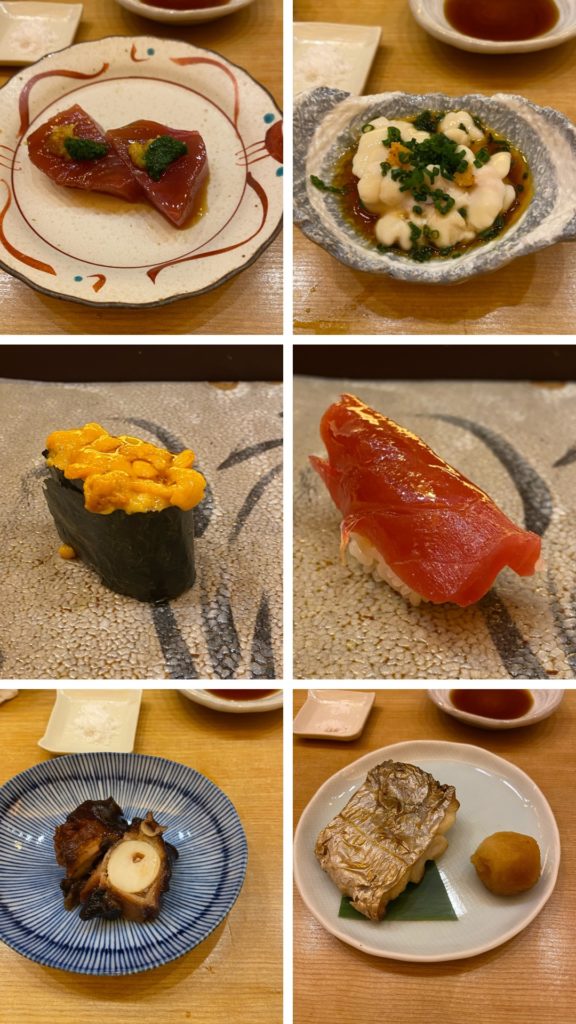
7. Teba Gyoza (gyoza stuffed chicken wings)
Before joining this Izakaya food tour via Airbnb Experiences, I had no idea teba gyoza existed. It definitely wasn’t on my radar before I left, but now that I’ve had it, I realize how special it is! teba gyoza is a fried chicken wing that’s stuffed with filling you’d normally find in gyoza – it’s delicious as it sounds. An Izakaya is a bar where you can enjoy small Japanese plates (like tapas) and cold beer. Izakayas are a big part of the nightlife culture in Japan and it was so cool to experience a bunch of them on the food tour.

6. Japanese Curry
I love how every Asian country has a different style of curry. You might know that curry is one of my favorite meals to make at home, and we’ll definitely feature a Japanese curry in the WWL Program soon. At one of the ski resorts, I enjoyed fried chicken curry with rice. It’s one of the most comforting foods I’ve ever had. The texture of the fried meat with the saucy curry and chewy rice is on another level.

5. Okonomiyaki (savory cabbage pancake)
Okonomiyaki is one of the dishes you’ll read about over and over if you’re planning a trip to Japan. It’s a savory pancake made with cabbage, a little wheat flour batter, pork, eggs, green onion and after that? Whatever else you want – kind of like pizza. There are 2 types of okonomiyaki: Hiroshima style and Osaka style. The main difference is that the Osaka style involves mixing all the ingredients together before cooking it, and Hiroshima style is all about layering the ingredients. We had Hiroshima style with mochi and cheese. On top is tons of “sauce” (Japanese BBQ sauce) and nori. It truly is soul food!

4. Ramen
My first ramen experience was a little intimidating! I had to order ramen from a machine, then bring a printed out ticket to the waitress inside. Luckily, there’s an English menu! Eating (and slurping) ramen properly is also kind of intimidating if you don’t know how to use chopsticks well like me. I have no idea why this ramen tasted so good (I have a hunch it’s the broth) but it was one of the best things I’ve ever tasted and I could have kept eating this forever.

3. Sushi
It’s official: Japan has ruined sushi for me. It’s just different. In most American sushi restaurants, you can get some pretty crazy rolls with tons of ingredients. But in Japan, the focus is on the fish and the rice. It’s so fresh! It doesn’t need anything else. My favorite part of eating sushi in Japan is that the wasabi is already mixed into the sushi! Japanese food isn’t spicy at all, so the wasabi they add is really the perfect amount of heat.

2. Ekiben (station bento)
An Ekiben is a bento meal (usually lunch) that you buy at the station before a long train ride, making it the ideal option for the bullet train. That’s exactly what I did on my way up to the mountains from Tokyo. I went to Ekibenya Matsuri (a bento shop in Tokyo Station) and picked out a bento from the “recommended” section. All I knew for sure is that it had chicken in it. Everything else was a (delicious) surprise, especially the sweet potato in the sweet section. The experience of eating this bento on the train while watching the landscape change from the bustling city to open fields and mountains was just beautiful.

1. Homemade Miso Soup & Teriyaki Chicken
On my second day in Tokyo, I took a cooking class at Comburger with Sato. Sato is a very experienced Japanese home cook who comes from a long line of restaurant and food workers, speaks perfect English and has hundreds of 5-star reviews. He holds cooking classes in his home in Shinjuku for a maximum of four people at a time. I was lucky enough to get a 1:1 class! Sato taught me how to make miso soup from scratch, the most perfect teriyaki chicken you’ve ever seen, Japanese rice with veggies and fried fish cakes. Of course, this meal takes the #1 spot because we made it all! There’s nothing better than home cooking. I’ll never forget this experience and I can’t wait to make this at home (and develop a meal prep version!). And just look at this impeccable table setting:

The food I ate in Japan really opened my eyes to different flavor combinations, ways to use flavor and why the rituals around food are so important to different cultures. Japanese food is all about balance and that’s something I want to bring back to my kitchen at home.
Resources I Used To Plan My Epic Solo Trip To Japan
Abroad in Japan Podcast
Chris Broad and Pete Macdonald host Abroad in Japan, a podcast where you can learn everything about what it’s like to live in Japan without actually going there. I listened to almost every episode before heading out and learned to love Chris and Pete’s sense of humor. Chris, who is originally from England, also has a YouTube channel dedicated to life in Japan since moving there.
21 Things to do When You Arrive in Japan

Watch this video on YouTube
Paolo From Tokyo
I love Paolo! He’s very passionate about Japan, easy to watch and has probably a decade-worth of content to watch — all about life in Japan and traveling in Japan. He helped me a lot prior to my trip!
What you NEED to KNOW when you First Arrive in Japan

Watch this video on YouTube
TabiEats
For more food-focused content, I loved watching the duo behind TabiEats. They get into more specifics behind the food culture in Japan compared to other channels!
10 Must-Try Food in Tokyo Japan
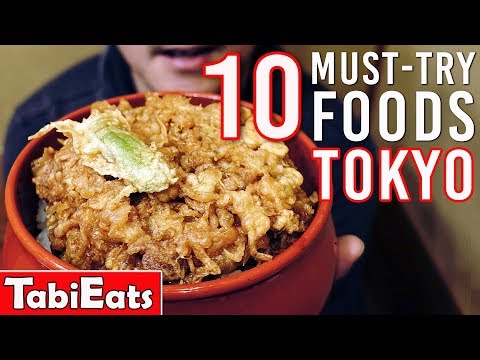
Watch this video on YouTube
I read a ton on of blogs too! You can pretty much google any question you have about traveling in Japan and I can promise you that someone out there has answered it.
When it comes to booking reservations, tours and classes in Japan, here are the sites that helped:
- Voyagin – I booked my transportation from Narita to my hotels via this site.
- Viator – I originally booked food tours through this site, but they were canceled due to lack of sign-ups in my case, thanks to the coronavirus and low tourist season in general
- Tableall – I used this site to reserve a table at a Michelin star sushi restaurant and would totally do it again
- Airbnb Experiences – this is great for finding last-minute classes and tours
- Air Kitchen – great for local cooking classes
- Cookly – more cooking classes here (with ratings)
Cooking Classes And Food Tours To Try In Tokyo
During my stay, I got to experience two cooking classes in Tokyo. Both of them were in my top 5 meals while visiting!
A cooking class with a local person (no matter where you travel) will give you key insights into the food and culture from a different angle: cooking at home. You’ll be able to ask specific questions about the food and traditions that you may not have otherwise been able to find out, especially with the language barrier!
Learning how to make teriyaki chicken with Sato at Comburger
Sato is an awesome teacher. He’s very warm, welcoming and knowledgeable as I mentioned above! Sato’s class was an incredible introduction to Japanese home cooking. He gave me enough confidence to try making authentic teriyaki chicken and miso soup at home, plus he inspired me to buy my very own donabe.
Cost: $98 – includes a meal and post-class tour!
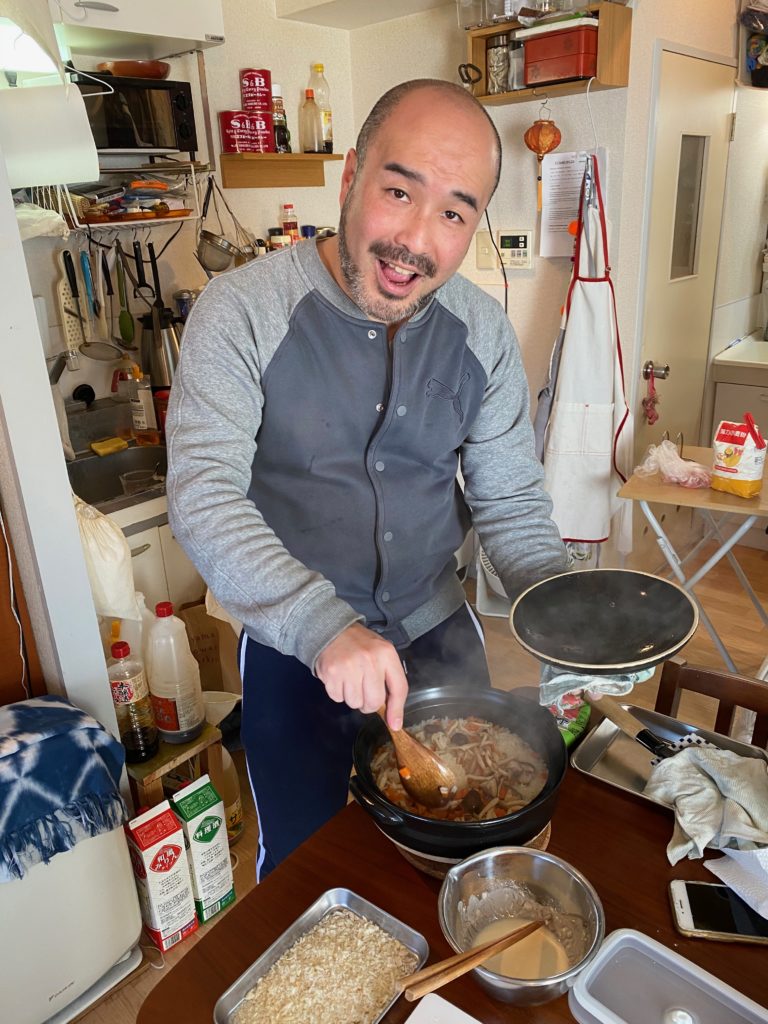
This was a last-minute decision when I found out I’d have an extra day in Tokyo thanks to bad weather in the mountains. I found Junko and her cooking classes via Air Kitchen. When I saw the menu on her bento class (onigiri, ichigo daifuku, karaage, etc) I knew I had to take this class. Junko is so sweet, approachable and loves food.
Cost: $57 – includes a meal!
I’m lucky that I was able to take what I learned in these classes and apply it to one of our special Workweek Lunch Meal Plans!

Click here to learn more about getting access to meal plans like this.
Hitting four Izakaya restaurants with Ninja Food Tours
Izakayas are bars that serve small plates (like Japanese tapas) and the more I read about them, the more they intimidated me as a solo traveler. Some eating experiences in Japan are great for solo travelers, and some are better for groups. This is definitely better for groups! A food tour was the best way to experience Izakaya eats as a solo traveler.
Ninja Food Tours offers tons of foodie experiences and I highly recommend going with them for food tours in Japan! We hit four Izakaya places and tons of food: yakitori, okonomiyaki, takoyaki, gyoza and lots of beer.
Cost: $90 – includes all the food and drinks!
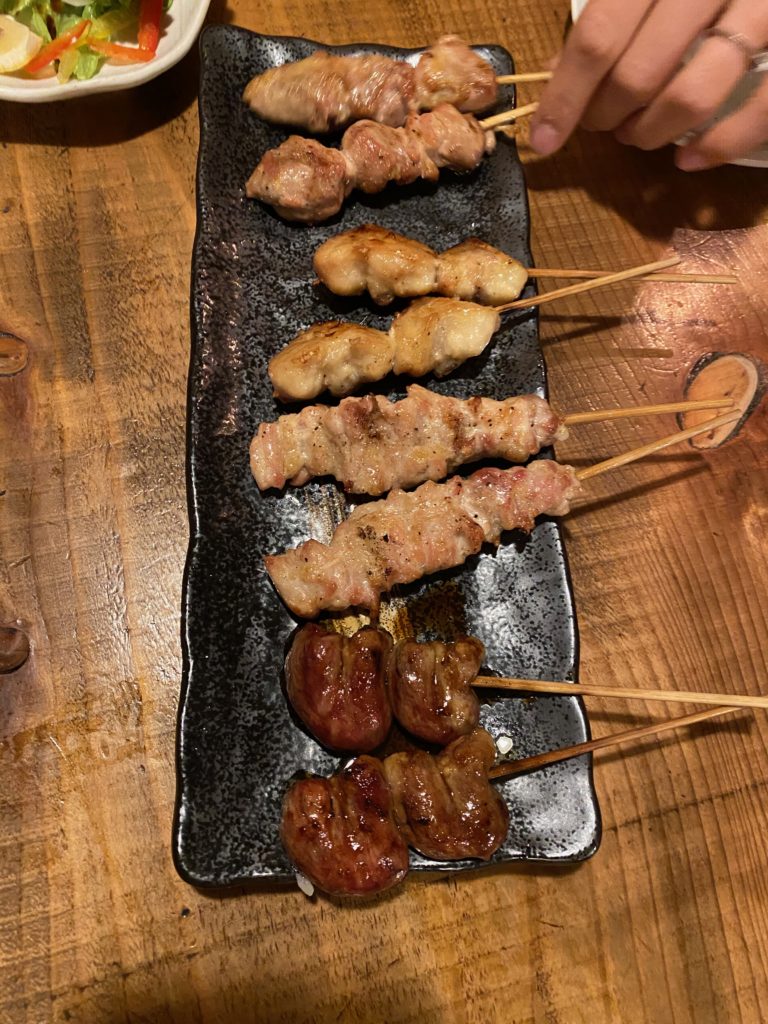
Experiencing the Tsukiji Outer Market with Ami
When doing research about Tokyo, the Tsukiji Market came up a lot. I learned that the actual fish market (aka inner market, where fisherman auction off freshly caught fish) has moved to a new location and has a completely different experience for tourists, but the outer market still remains. It’s a great way to learn about the history of the market and the way fish is caught and sold throughout Japan. I learned a lot about drinking and social culture with my awesome tour guide, Ami, who was super nice and knowledgeable!
Cost: $90 – includes food and sake!
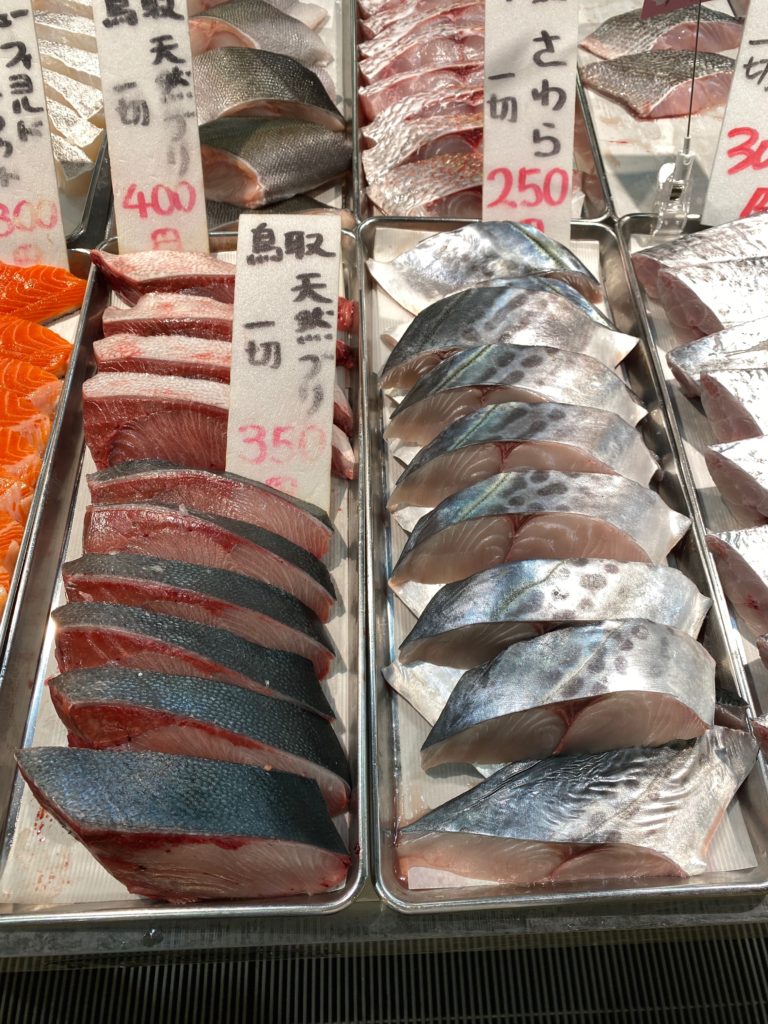
Where I Stayed In Tokyo As A Solo Traveler
I was able to book hotels with credit card points for this trip.
My first hotel was Sotetsu Fresa Inn in Higashi Shinjuku, about 15 minutes walk from Shinjuku Station. I loved this hotel! The room was small, but perfect for a solo traveler. I think this chain is awesome for first-time visitors to Japan! There are locations all over Tokyo.
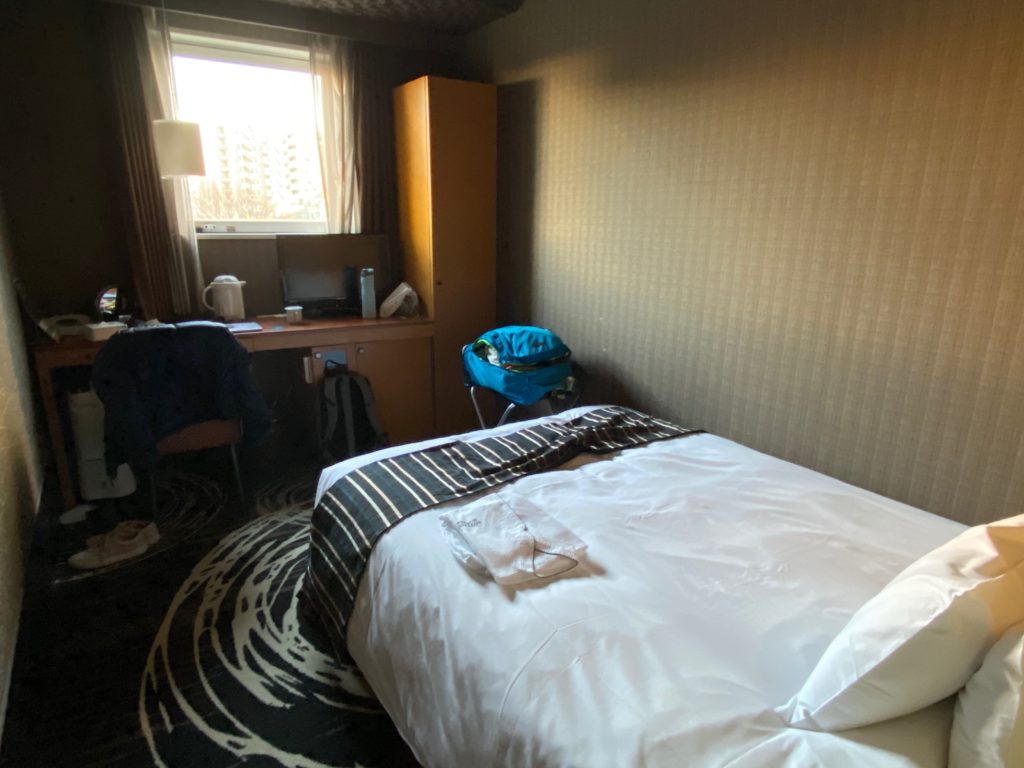
My second hotel was APA Kabukichuo, a business hotel right by the infamous Robot Restaurant (it’s a much busier area), about 5 minutes walk from Shinjuku Station. This hotel was just okay. The room was smaller, more awkward and the overall experience isn’t one I’d recommend to first-time tourists. But I’m happy I stayed here during the second Tokyo leg of my trip, when I was already used to Japan a little more!
I spent one night at Ikebukuro Metropolitan (I had a random extra night) and decided to splurge on larger room with a view to work out of fo the day. It was an excellent experience and if you can splurge, it’s worth it! It’s steps from the Ikebukuro station.
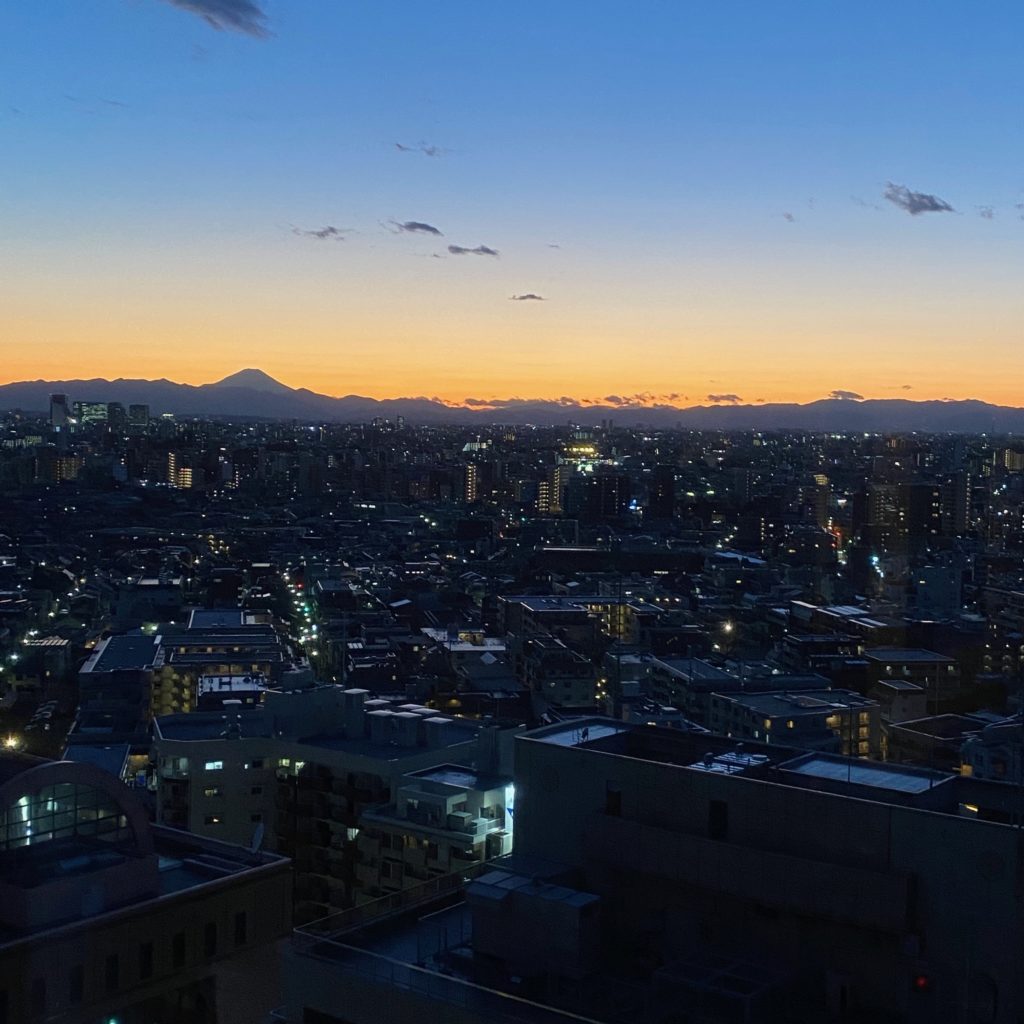
Useful Japanese Phrases
- Onegaishimasu – do me this favor (polite way of asking for help – “u” is silent)
- Sumimasen – excuse me or sorry (mostly when you bump into someone, not to ask for help)
- Kore o kudasai – this please (while pointing – helpful for when pointing to a menu item or something in a store)
-
Arigato gozaimashita
—
past tense way of saying thank you (saying arigato alone is more casual)
- Itadakimasu – something you say before a meal, it means something along the lines of “I received this food” (the “u” is silent)
- Konnichiwa/Konbawa – good morning/good evening
-
Osusume wa nan desu ka
–
what do you recommend? (pronounced osusume wa nandeska)
How Much I Spent In Tokyo
Food, Drink & Restaurants for 8 days: $252
Transport in Tokyo for 8 days + airport shuttle: $84
Cooking Classes and Food Tours: $349 (pre-reserved)
Omakase Meal: $355 (pre-reserved)
Entertainment & Shopping: $219
Flights & Hotels: $0 (booked with points)
Wifi & Data: $229 (next time I’ll just get the wifi, not data)
Travel Insurance: $142
Misc/emergency/unexpected: $189
Total for this portion of the trip: $1,819
Total for my trip including the snowboarding guided tour (I spent 2 weeks total in Japan!): $6,139
I found it really easy to eat affordable, delicious meals in Tokyo! It’s amazing how convenience food is a much higher quality in Japan compared to other places (especially the US).
Thank you so much for reading this!
If you have any questions or tips to add, drop them below in the comments!















![Toni Kroos là ai? [ sự thật về tiểu sử đầy đủ Toni Kroos ]](https://evbn.org/wp-content/uploads/New-Project-6635-1671934592.jpg)


